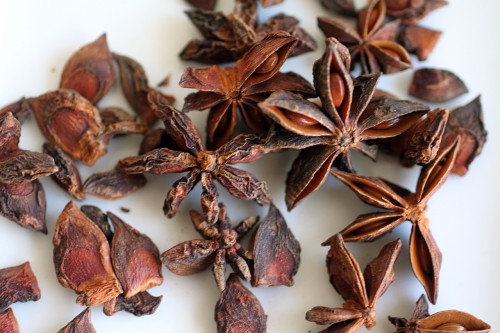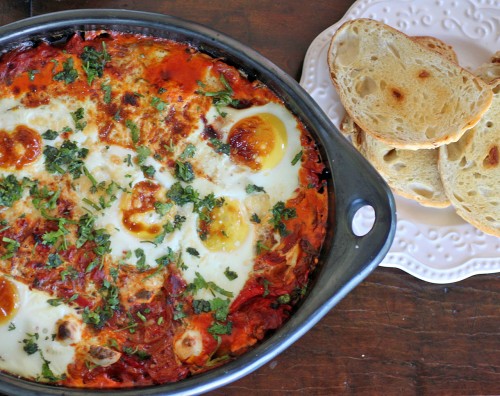Star Anise
This might sound completely idiotic, but I’ve recently been hit over the head with the fact that everyday is a totally subjective monster. What’s everyday to you may be completely foreign to someone else, and so it’s always better to err on the side of giving too much info lest you leave someone out! Recently, I’ve been doing a lot of events and I always keep a bunch of spices out on the table. I’ve noticed that, without fail, star anise seems to draw people in who want to know more about its flavor and how to use it in cooking.
Spidery, little star anise is actually the fruit of an evergreen tree that’s been dried. The spokes of star anise are usually split, revealing a shiny, oblong seed; interestingly enough, the pod has a lot more flavor than the seeds. And what an incredible flavor! Although completely unrelated to aniseed, the flavor is similar with really strong, licorice-like notes. There’s also a woodsy spiciness, not unlike cinnamon or even clove – truly complex and warm and deep. When you inhale the fragrance of the spice, it smells sweeter and more herbal than it tastes. The scent is transporting…
Star anise is a secret weapon, that ingredient you can add to everything from desserts to braises that people won’t be able to identify. I’ve used it in a few sweet dishes on here: a sugar plum sherbet and my Godson’s favorite banana & star anise tapioca pudding (see note below), and I plan to throw it in a mean, super spiced apple pie post apple-picking; it’s ridiculously delicious with vanilla bean, cinnamon and nutmeg . But it’s a beautiful ingredient on the savoury side as well – key in Indian garam masala and Chinese five spice, this spice takes bbq sauce to a new level and is gorgeous in some wine-braised shortribs.
Although beautiful in its whole state, beware that it is extremely difficult to grind star anise to a complete powder without industrial strength. I like to keep some whole ones to throw into liquids as the flavor diffuses easily and also keep some powder for dishes where a ground spice is more appropriate.
Note: Star anise should NOT be confused with Japanese star anise. Star anise (which is the Chinese version that is typically sold for cooking purposes) has long been used to treat colic in babies in many different cultures along with fennel and anise.




















